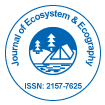Nosso grupo organiza mais de 3.000 Séries de conferências Eventos todos os anos nos EUA, Europa e outros países. Ásia com o apoio de mais 1.000 Sociedades e publica mais de 700 Acesso aberto Periódicos que contém mais de 50.000 personalidades eminentes, cientistas de renome como membros do conselho editorial.
Periódicos de acesso aberto ganhando mais leitores e citações
700 periódicos e 15 milhões de leitores Cada periódico está obtendo mais de 25.000 leitores
Indexado em
- Índice de Fonte CAS (CASSI)
- Índice Copérnico
- Google Scholar
- Sherpa Romeu
- Acesso Online à Pesquisa no Meio Ambiente (OARE)
- Abra o portão J
- Genâmica JournalSeek
- Diretório de Periódicos de Ulrich
- Acesso à Pesquisa Online Global em Agricultura (AGORA)
- Biblioteca de Periódicos Eletrônicos
- RefSeek
- Universidade Hamdard
- EBSCO AZ
- OCLC – WorldCat
- Catálogo online SWB
- Biblioteca Virtual de Biologia (vifabio)
- Publons
- Fundação de Genebra para Educação e Pesquisa Médica
- Euro Pub
Links Úteis
Diários de acesso aberto
Compartilhe esta página
Abstrato
Analysis of the Proximate Composition of Several Fish Species from the Ogun River
Shouliang Huo
The detrimental effects of man on the aquatic environment are constant. In the Ogun River, Nigeria, four fish species Oreochromis niloticus, Malapterurus electricus, Parachanna obscura, and Chrysichthys nigrodigitatus were chosen for this study to assess the proximate composition and concentration of certain heavy metals. Atomic absorption spectrometry was used to examine the fish species for Manganese (Mn), Lead (Pb), Nickel (Ni), Cadmium (Cd), and Zinc (Zn). The fish species were gathered from the Abeokuta axis of the river. Utilizing accepted techniques, the moisture, crude protein, ash, and fat contents of the four fish species were examined. The findings showed that the four fish species had different rates of metal buildup. Only Oreochromis niloticus and Chrysichthys nigrodigitatus showed Pb and Mn traces, respectively. The liver and gills accumulated more metals than the muscles, with the exception of a few instances when Pb and Ni were found in the muscles of Oreochromis niloticus and Parachanna obscura, respectively. In every instance, the metal concentrations exceeded what was considered acceptable by international standards. While fat was the least abundant nutrient in all fish species (0.88-1.89 percent), all fish had high moisture contents of between 75 and 80 percent. The variations in proximal values between fish species were not noteworthy.
Diários por Assunto
- Agro e Aquicultura
- Alimentação e Nutrição
- Bioquímica
- Ciência da Computação
- Ciência de materiais
- Ciencias ambientais
- Ciências Clínicas
- Ciências Farmacêuticas
- Ciências gerais
- Ciências Médicas
- Ciências Sociais e Políticas
- Ciências veterinarias
- Economia e Contabilidade
- Enfermagem e cuidados de saúde
- Engenharia
- Engenheiro químico
- Física
- Genética e Biologia Molecular
- Geologia e Ciências da Terra
- Gestão de negócios
- Imunologia e Microbiologia
- Informática
- Matemática
- Química
Revistas clínicas e médicas
- Anestesiologia
- Assistência médica
- Biologia molecular
- Cardiologia
- Cirurgia
- Dermatologia
- Diabetes e Endocrinologia
- Doenças infecciosas
- Enfermagem
- Fisioterapia e Reabilitação
- Gastroenterologia
- Genética
- Hematologia
- Imunologia
- Medicamento
- Medicina Reprodutiva
- Microbiologia
- Nefrologia
- Neurologia
- Odontologia
- Oftalmologia
- Oncologia
- Ortopedia
- Pediatria
- Pesquisa Clinica
- Pneumologia
- Psiquiatria
- Toxicologia

 English
English  Spanish
Spanish  Chinese
Chinese  Russian
Russian  German
German  French
French  Japanese
Japanese  Hindi
Hindi